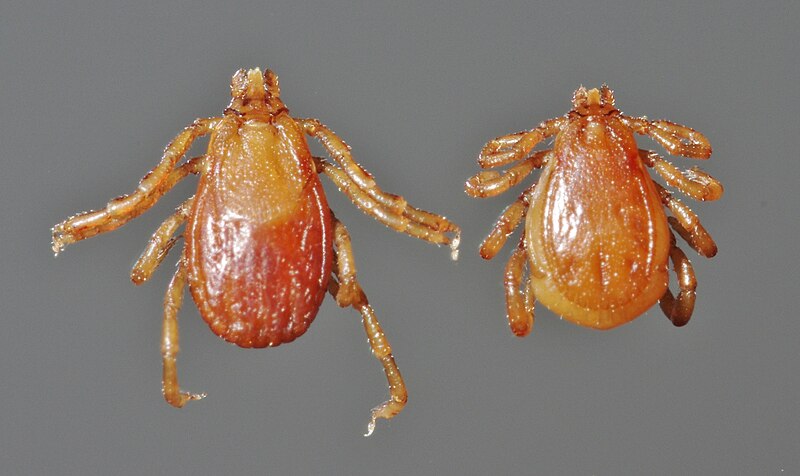
Appearance
The Brown Dog Tick, Rhipicephalus sanguineus, is uniformly reddish-brown, making it easily distinguishable from other tick species. Unlike other ticks, which may have varied coloration or patterns, the Brown Dog Tick’s consistent red-brown appearance and its preference for indoor environments make it unique. It is often found in homes where dogs are present, as it primarily feeds on canines. Humans are rarely bitten by this tick species.
Habitat and Behavior
The Brown Dog Tick goes through four life stages: egg, larva, nymph, and adult. Females can lay between a few hundred to as many as 5,000 eggs, with an average of around 1,600. These eggs are laid in hidden places such as cracks in walls or beneath floorboards. After hatching, larvae can survive for up to eight months without feeding, waiting for a host to pass by. Once they attach to a dog, they typically feed on areas like the ears and neck.
Brown Dog Tick Life Cycle
The Brown Dog Tick has four life stages: egg, larva, nymph, and adult. Female ticks can lay anywhere from a few hundred to 5,000 eggs, usually around 1,600 on average. These eggs are hidden in cracks, under flooring, or within walls. Larvae can survive for up to eight months waiting for a host, typically attaching to dogs’ ears and neck areas when they feed.
Feeding and Infestation
Brown Dog Ticks drop off the host after feeding and can infest various parts of the home. They prefer indoor environments and are rarely found in heavily wooded or outdoor areas. Infestations often occur when ticks drop off in places where dogs rest or pass by.
Brown Dog Tick Control and Prevention
Effective control of Brown Dog Ticks involves treating both the pet and the environment. Crack and crevice treatments using long-lasting insecticides are crucial for controlling indoor infestations. For dogs, regular veterinary treatments are recommended. If both the pet and the environment are not treated simultaneously, reinfestation is likely.
Preventive measures, such as keeping the grass trimmed and sealing cracks where ticks could hide, can also help in reducing infestations.
For complete peace of mind, check out our Tick Control Services.
